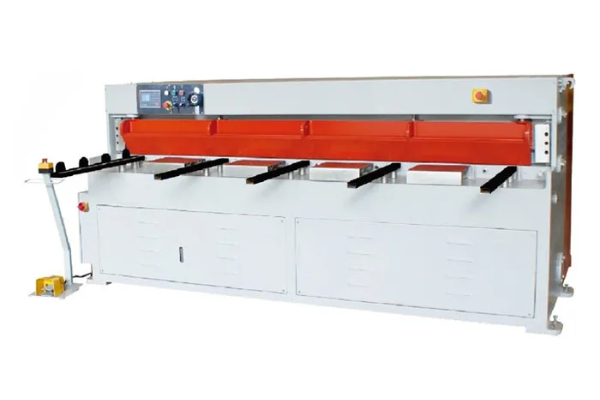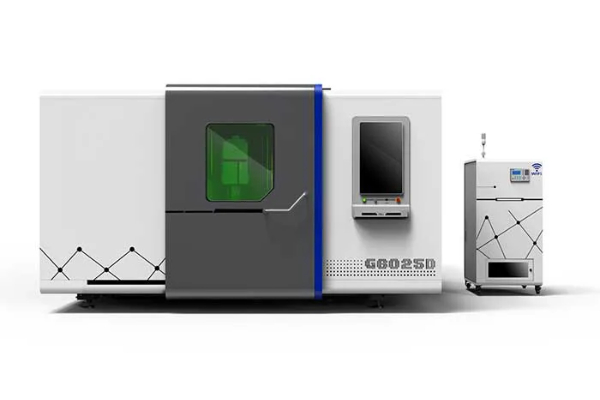
The Environmental Impact of Metal Strip Cutting Machines
- By:Metmac
- 2024-07-23
- 125
The Environmental Impact of Metal Strip Cutting Machines: An Overview
The use of metal strip cutting machines has become increasingly prevalent in industrial settings, providing efficient and precise methods for cutting metal strips to desired dimensions. However, these machines can have a significant environmental impact, requiring careful consideration during operation and disposal. This article examines the environmental consequences of metal strip cutting machines, exploring both potential hazards and mitigation strategies.
Air Pollution
Metal Fumes and Dust: Metal strip cutting generates fine metal particles and fumes, which are released into the atmosphere if not properly controlled. These emissions contribute to air pollution and can pose health risks to workers and the surrounding community, including respiratory problems and metal poisoning.
Cooling Lubricants: Many metal strip cutting machines use cooling lubricants to dissipate heat and reduce friction. These lubricants can vaporize and enter the atmosphere, releasing volatile organic compounds (VOCs) that contribute to smog and ozone depletion.
Water Pollution
Wastewater: Metal strip cutting machines generate wastewater containing metal particles, cutting fluids, and other contaminants. If discharged untreated, this wastewater can pollute waterways, harming aquatic life and affecting water quality.
Solid Waste
Metal Scrap: Metal strip cutting produces significant amounts of metal scrap, which must be properly disposed of to avoid environmental contamination. Scrap metal can leach toxic substances into soil and groundwater if not recycled responsibly.
Disposable Cutting Blades: Many metal strip cutting machines use disposable cutting blades, which are discarded after use. These blades contribute to landfill waste and can leach heavy metals into the environment.
Noise Pollution
The operation of metal strip cutting machines generates significant noise levels, which can disturb workers and nearby communities. Prolonged exposure to excessive noise can lead to hearing loss and other health issues.
Mitigation Strategies
Air Pollution Control: Installing air filtration systems and using environmentally friendly coolants can minimize air emissions from metal strip cutting machines.
Water Treatment: Proper wastewater treatment facilities can remove contaminants before discharge, protecting water resources.
Solid Waste Management: Recycling metal scrap and using reusable cutting blades can reduce solid waste generation and environmental impact.
Noise Reduction: Implementing soundproofing measures, such as enclosures and acoustic panels, can mitigate noise pollution from metal strip cutting machines.
Conclusion
The environmental impact of metal strip cutting machines requires careful consideration to avoid adverse consequences. By implementing effective mitigation strategies, industries can minimize air, water, soil, and noise pollution associated with these machines. Responsible use and disposal practices are crucial to protect the environment and ensure the sustainability of metal strip cutting operations.
-
Advanced Sheet Metal Rolling, Cutting, and Folding Machines for Efficient Fabrication
2025/10/22 -
High-Precision Sheet Metal Bending and Cutting Solutions for Modern Manufacturing
2025/10/22 -
High-Precision Solutions from Leading Sheet Metal Cutting Machine Manufacturers
2025/09/11 -
Reliable Sheet Metal Equipment for Sale to Support Precision Fabrication
2025/07/17
-
Advanced Sheet Metal Rolling, Laser Cutting, and Folding Machines for Precision Fabrication
2025/10/31 -
High-Performance Sheet Metal Bending and Cutting Machines for Modern Fabrication
2025/10/31 -
High-Quality Sheet Metal Equipment for Sale: Efficient Solutions for Modern Manufacturing
2025/10/31 -
High-Performance Sheet Metal Equipment for Sale: Forming and Shearing Solutions for Modern Fabrication
2025/10/22
-
A Guide to the Latest Innovations in Sheet Metal Folding Machines
2024/11/29 -
Key Features to Consider When Investing in a Sheet Metal Folding Machine
2024/11/28 -
Enhancing Precision with Advanced Sheet Metal Folding Machines
2024/11/27 -
How to Choose the Right Sheet Metal Folding Machine for Your Workshop
2024/11/26






